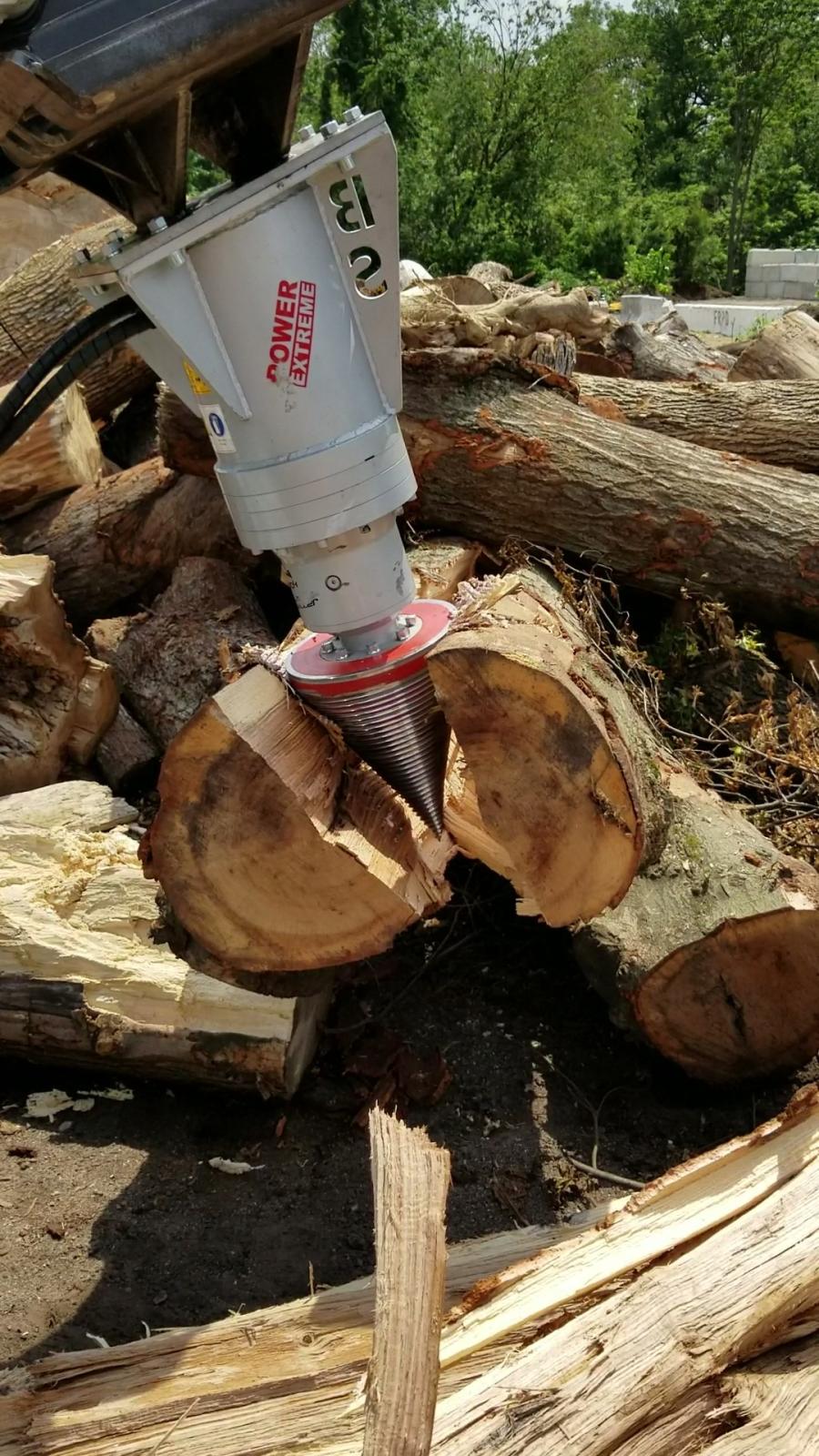
Mon October 15, 2018
Brian Fraley – FRALEY CONSTRUCTION MARKETING
The Paramus Shade Tree & Parks Commission has transformed its tree removal operation to improve worker safety and productivity by purchasing a Black Splitter model SB cone splitter from Lumberton, N.J.-based Ransome Attachments.
Paramus, located 8 miles west of Upper Manhattan, is an urban borough with 27,032 residents packed into 10 square miles. The commission is responsible for 35,000 street trees, in addition to 10 parks, nine sports fields, and the grounds of eight borough buildings.
Paramus takes it trees seriously. It has earned the National Arbor Day Foundation's Tree City USA designation for 42 years. Paramus must meet several standards, but generally speaking, it means that an in-house crew is dedicated to maintaining its tree population.
Superintendent Ken Raschen recognized that its tree removal process was inefficient and unsafe for his crews. The roving operation would travel to a site, shut down a lane of traffic, extract the tree, and process it into 24-inch sections before loading them into a truck bound for its compost facility. The negative impacts to workers, traffic, and residents were clear.
It was Summer 2018 when Raschen spotted the Black Splitter in a trade magazine. He reached out to Ransome Attachments. Raschen and his colleagues were impressed after watching an extensive on-site demonstration of the cone splitter in June. They were advised by Owner Eric Ransome that the Black Splitter Model SB was the best option for a skid steer loader mount and purchased the attachment in July.
Acquiring the Black Splitter allowed the commission, in conjunction with the Department of Public Works, to change its tree removal policy to improve safety and productivity. The lion's share of the work is now done at the compost facility because of the Black Splitter.
"We're now taking one 16-foot-long stalk and loading it onto a truck versus eight 24-inch pieces," explained Raschen. "We can also remove it from a roadway, a resident's property, or a business owner's property more quickly."
The tree stalks are hauled to the borough's compost facility for processing by the Black Splitter.
"We take all the wood from our removals and split it into fireplace lengths," Raschen said. "We then offer it to residents free of charge."
The log splitting technique to quarter the stalk is specific. The operator drills into one end to begin the split. The rotating cone then sweeps along the break toward the middle, cutting any remaining fibers as it goes. The operator repeats these steps from the opposite end to finish the log.
Prior to the Black Splitter, three of the commission's workers would brave the elements using power saws and hand tools to take apart a stalk in proximity to heavy traffic. The operation was time- and labor-intensive and exposed workers to unnecessary safety risks.
"Nobody wanted to rip those stalks because it's labor intense," said Raschen. "Now we only need one operator in an air-conditioned or heated machine, and as long as he has fuel, he's going to be productive."
The Black Splitter has reduced the time required, eliminated safety risks, and freed up two workers to be assigned to other tasks such as grinding stumps or planting trees.
"The big item here is it's one person is able to do it [log splitting]," said Raschen. "And instead of tying up traffic with a large operation on the road, we get that stalk off to a safe location where we then continue to process it so that it can be given out to the residents.
Raschen has yet to find a tree that can hold up against the Black Splitter. He's watched the Model SB rip seamlessly through hardwood trees like Oak and stringy species like the Lindon Elm.
Raschen plans to start tracking productivity in January 2019 when the winter tree removal season gets under way. He will do a side-by-side comparison of productivity metrics to demonstrate to borough management that the Black Splitter was a good investment, but he has confidence that the results will be positive.
"The operator is getting comfortable with the unit and there's no question productivity is up," Raschen said. "We're getting more done than we did the other way and one man is doing more than what three men did."
Paramus works under a community forestry management plan that documents the quantity and species of its trees. Most planting is done in the Spring and Fall, and removals are done in Winter.
He expects the Black Splitter to stay especially busy this year because of storm-damaged trees and an ongoing battle with the Emerald Ash Borer. Based on what he has seen from the Model SB, he feels the attachment is up for the challenge.
"This is still new for us, but I'm impressed with it."
 Forestry Equipment
Forestry Equipment Articles
Articles Sign up for Updates
Sign up for Updates Sell Your Machines
Sell Your Machines

 Forestry Equipment
Forestry Equipment Forestry Dealers
Forestry Dealers Forestry Articles
Forestry Articles Sign up for Updates
Sign up for Updates Sell Your Machines
Sell Your Machines